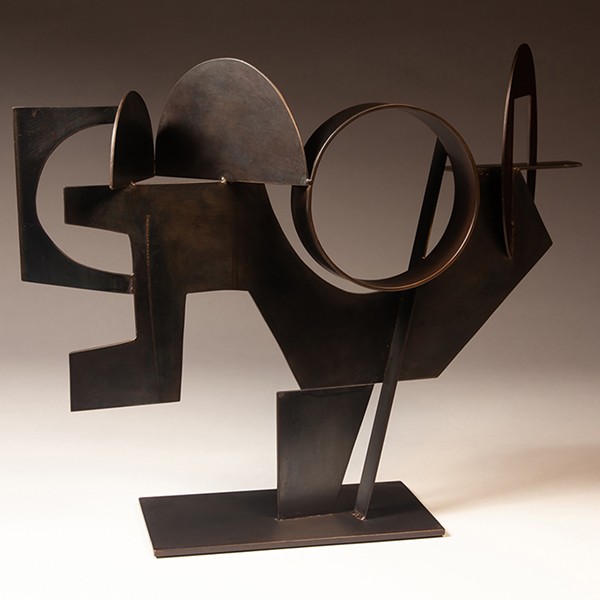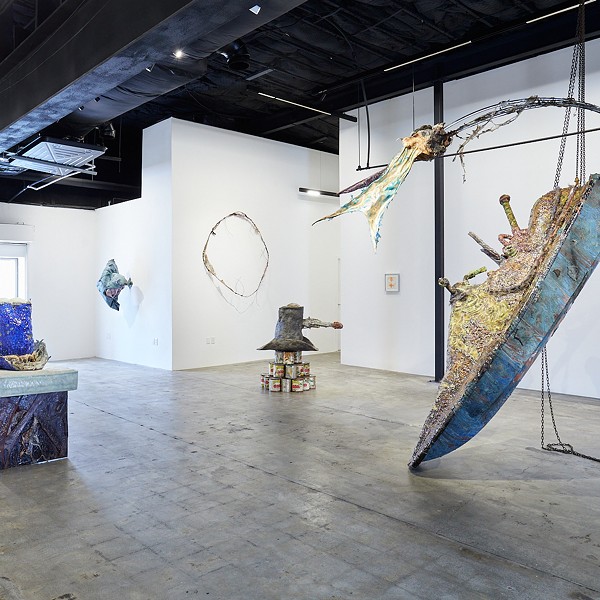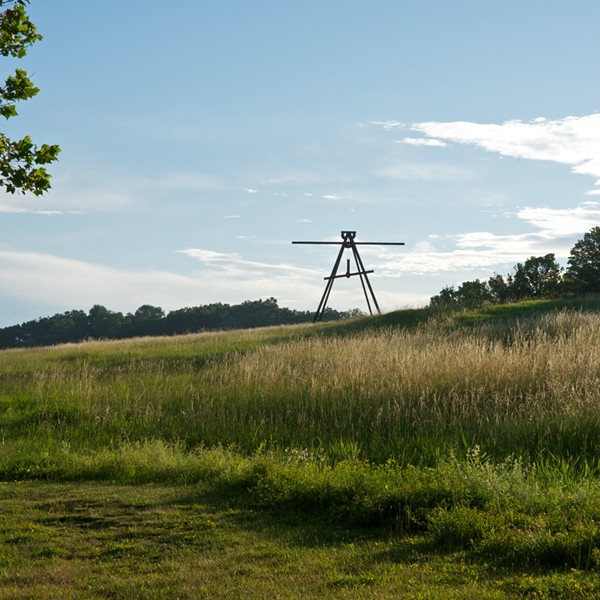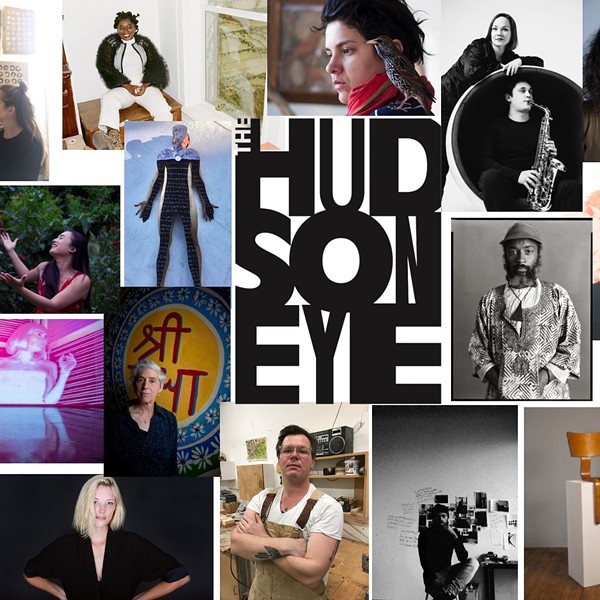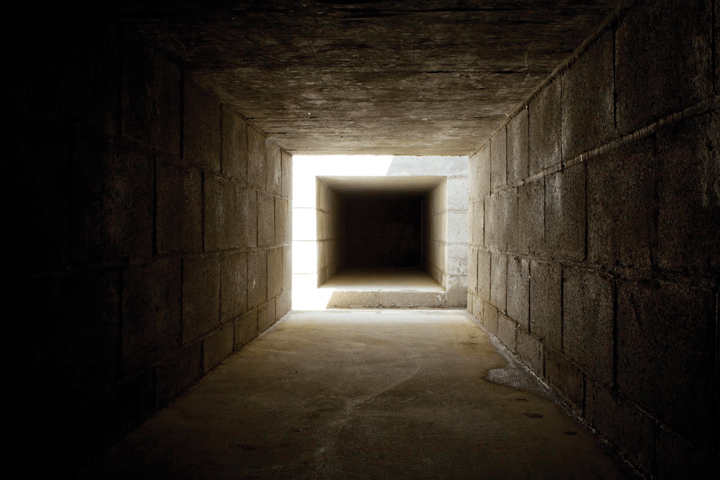
A view of Alice Aycock’s “A Simple Network of Underground Wells and Tunnels” at Omi International Arts Center.
In the 20th century, what we agree to call “sculpture” changed dramatically. In the good old days, the words “sculpture” and “statue” were more or less interchangeable. A sculpture meant an image of a man or woman, carved out of stone or wood, modeled in clay or wax, perhaps cast in bronze.
Now sculpture means something like “three-dimensional art.” And since every object that we experience is three-dimensional, every object can be experienced, at least potentially, as sculpture.
So what is three-dimensionality? It is the experience of objects, the space around them and the space that they displace. We experience space in at least three ways: with the body, with the eyes, and with the mind. Alice Aycock’s A Simple Network of Underground Wells and Tunnels is a work that explores space in each of these ways.
The piece, recently installed at The Fields Sculpture Park at Art Omi in Ghent, is a unique collaboration between the artist, Bill Maynes, the director of the park, and Peter Franck, director of architecture Omi. Originally constructed by the artist for an exhibition titled “Projects in Nature” in 1975 at Merriewold West in New Jersey, the work is a historically accurate re-creation of the original structure.
The artist describes the work as “a subterranean network of passages set up for the purpose of operating below the surface of the earth,” and cites French philosopher Gaston Bachelard’s references to childhood fears of the cellar and the attic. The work creates a primal architectural experience of moving beneath the earth from light to darkness.
It is constructed of a simple grid of six square well-like shapes. Alternating in a checkerboard pattern, the floor of the concrete-block enclosures either terminates at the ground plane or penetrates the earth, giving the viewer (or, better, the experiencer) access, via ladders, to the network of tunnels below.
There’s just something about tunnels—kids are fascinated by them, and you don’t have to be Freud (or even to have read him) to know, intuitively, that the experience of entering in, moving through, and emerging from a passage through the earth recapitulates for us some of the most primal experiences of our physical bodies. From the surface, there is mystery—one sees the structure, the holes, the ladders, the wooden covers. One imagines what might lie below. If we are conscious enough of the feeling this evokes, we become aware of irrational fears associated with the unknown—and, simultaneously, of a competing desire to know.
Then, perhaps, we take action. We carefully step down the ladders into the network of tunnels. It is neither especially large nor deep, but as we enter and pass through, we gain understanding of the structure of the work, and, perhaps too, of our own perception. From above, we could not quite fathom what was below; from below, we have the memory of what is above in our minds. We move into the dark and out to the light. This is not metaphor; it’s just what happens.
Aycock is part of a generation of artists that emerged in the late 1960s and early '70s that sought to move out of the confines of the white walls of the gallery and away from objects that could be easily appropriated by the system of commerce that is, inevitably, the art market. Her work, like much of what is frequently grouped under the term “earthworks,” is a kind of hybrid of sculpture, architecture, and landscape. Of course, there are precedents for this sort of thing—Egyptian and Mexican pyramids and tombs come to mind, and especially Native American Pueblo kivas, ceremonial spaces in which participants enter in order to commune with sacred and ancestral spirits. But the only spirits we encounter inside Aycock’s tunnels are our own. Entering the mysterious wells and finding nothing to look at but the framing of light, which may be called the “subject” of the work, we may become a bit more conscious of the ways in which our need to understand and to know the world is structured.
A Simple Network of Underground Wells and Tunnels will be on permanent display at The Fields Sculpture Park at Omi International Arts Center, Ghent.The covers to the tunnels are currently opened only on Saturdays. (518) 392-4747; Artomi.org.










